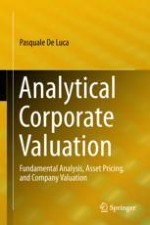2018 | OriginalPaper | Chapter
4. Utility Function Approach
Author : Pasquale De Luca
Published in: Analytical Corporate Valuation
Publisher: Springer International Publishing
Activate our intelligent search to find suitable subject content or patents.
Select sections of text to find matching patents with Artificial Intelligence. powered by
Select sections of text to find additional relevant content using AI-assisted search. powered by
Abstract
-
utility functions criteria;
-
mean-variance criteria.
